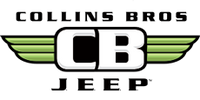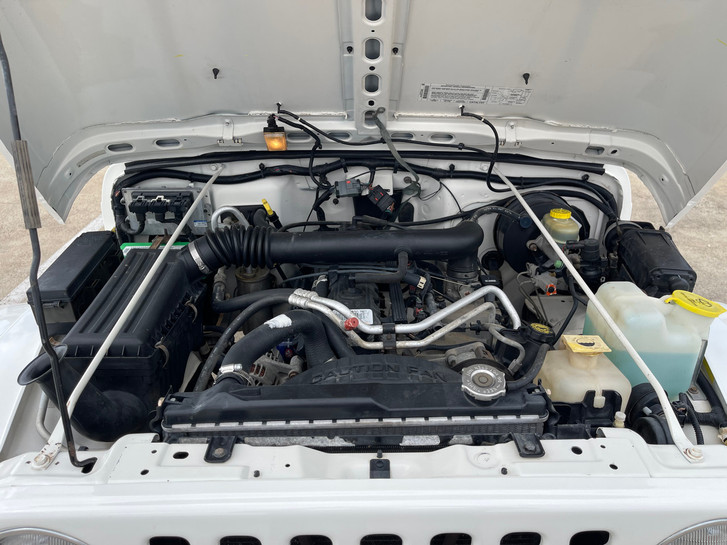The Jeep Wrangler is built for adventure, tackling rugged trails and daily commutes with ease. But even the toughest vehicles need upkeep. Regular maintenance and timely replacement of Jeep Wrangler parts keep your ride performing at its best and ready for anything. Worn brakes, aging batteries, or failing suspension components can compromise safety and performance.
Knowing which parts wear out most often, how to choose high-quality replacements, and when to swap them out ensures your Wrangler stays reliable for years. Whether you're upgrading for off-road durability or replacing everyday essentials, the right parts make all the difference.
Guide to Jeep Wrangler Upgrades
Upgrades are a big part of Jeep ownership. Whether it’s a lift kit for off-road adventures, LED lighting for better visibility, or interior mods for comfort, upgrades enhance performance and resale value.
Suspension upgrades help with ground clearance and handling, making off-roading smoother and more controlled. LED lighting improves visibility for nighttime drives and rough terrains. Inside, custom seats, floor mats, and infotainment systems make long drives more comfortable.
Regular maintenance and preventive care keep everything running smoothly, extending your Jeep’s lifespan and preventing costly repairs. Take care of your upgrades, and they’ll take care of you. For official maintenance regulations, check out EPA auto maintenance regulations.
Most Replaced Jeep Parts
Is your Jeep starting to feel sluggish? Maybe it’s stuttering over bumps, getting stuck on trails, or just not handling like it used to. If you’ve noticed any of these issues, it might be time to swap out some old parts.
Here are some of the most commonly replaced Jeep Wrangler parts and how to choose the best replacements.
Brakes
Your braking system is your first line of defense, so worn-out components should be replaced immediately.
Signs of wear:
-
Squeaking or grinding noises
-
Longer stopping distances
-
Vibrations in the brake pedal
Replacement Advice: Stick with OEM brake pads and rotors for reliability. If you want better performance, ceramic or drilled rotors handle heat better and improve braking efficiency.
Tires
Your tires affect everything from traction to fuel efficiency. Off-road enthusiasts replace their tires more often due to rough terrain wear.
Signs of wear:
-
Uneven tread wear
-
Cracks in the rubber
-
Reduced grip on wet surfaces
Replacement Advice: Choose tires based on your driving style. All-terrain tires offer a balance between off-road toughness and on-road comfort. If you spend more time on trails, mud-terrain tires give you the traction you need.
Battery
Extreme weather, heavy electrical use, and age can kill your battery.
Signs of wear:
-
Slow engine crank
-
Dim headlights
-
Corroded battery terminals
Replacement Advice: Opt for a high cold-cranking amp (CCA) rating battery, especially if you live in cold climates. AGM (Absorbent Glass Mat) batteries last longer and handle vibrations better.
Suspension Components
Your Jeep’s suspension takes a beating on rough terrain. Worn-out shocks, struts, and control arms can make your ride feel rough and unstable.
Signs of wear:
-
Bumpy ride or excessive bounce
-
Uneven tire wear
-
Poor handling or drifting
Replacement Advice: Go for heavy-duty shocks and lift kits if you off-road frequently. If you stick to the pavement, OEM replacements will restore factory-like comfort.
Exhaust System
A failing exhaust system doesn’t just make your Jeep louder—it can reduce fuel efficiency and performance.
Signs of Wear:
-
Louder engine noise
-
Rust or holes in exhaust pipes
-
Decreased fuel efficiency
Replacement Advice: Stainless steel exhaust systems resist rust and last longer. Choose a system that meets emissions regulations while giving your Jeep a better sound and performance boost.
Spark Plugs
Your engine relies on spark plugs to ignite the fuel-air mixture. Worn-out plugs can cause performance issues and poor fuel economy.
Signs of Wear:
-
Engine misfires
-
Rough idling
-
Decreased acceleration
Replacement Advice: Check your owner’s manual for the correct spark plug type. Iridium or platinum spark plugs last longer and improve combustion.
Air Filters
A clogged air filter chokes your engine, reducing power and efficiency.
Signs of Wear:
-
Reduced engine performance
-
Black smoke from the exhaust
-
Lower fuel economy
Replacement Advice: Replace your air filter regularly, especially if you drive on dusty trails. A high-flow performance filter can improve airflow and horsepower.
Belts and Hoses
Your Jeep’s belts and hoses keep everything running smoothly, from the engine cooling system to the power steering.
Signs of Wear:
-
Cracks or fraying
-
Leaks
-
Squealing noises from the engine
Replacement Advice: Check belts and hoses during routine maintenance. OEM replacements are a safe bet, but reinforced silicone hoses last longer in extreme conditions.
Fuel Pump
If your fuel pump fails, your Jeep won’t start—or it might stall when you least expect it.
Signs of Wear:
-
Engine sputtering
-
Difficulty starting
-
Stalling at high temperatures
Replacement Advice: Choose a high-quality fuel pump to ensure consistent fuel delivery. Cheap replacements can fail quickly, leaving you with bigger problems.
Alternator
The alternator powers your Jeep’s electrical systems. A failing alternator can leave you stuck.
Signs of wear:
-
Dimming headlights
-
Electrical malfunctions
-
Battery warning light on the dashboard
Replacement Advice: Stick with OEM or high-output alternators if you run multiple accessories. A failing alternator can drain your battery fast, so replace it before it leaves you stranded.
Choosing the Best Jeep Wrangler Parts
Finding Jeep Wrangler parts isn’t hard—there are plenty of options out there. But not all parts are created equal. Whether you’re replacing common Jeep maintenance parts like filters and belts or upgrading your ride, choosing high-quality, compatible components ensures performance, safety, and longevity.
When shopping for parts, you'll come across two main types: OEM (Original Equipment Manufacturer) parts and aftermarket parts. Understanding the difference can save you from frustration and costly mistakes.
OEM and Aftermarket Parts
-
OEM Parts: OEM parts are made by the same manufacturer that built your Jeep. They’re designed to fit perfectly and maintain factory performance. You don’t have to worry about compatibility issues or subpar materials. The downside? They often cost more than aftermarket alternatives. But if reliability and longevity matter to you, OEM is the way to go.
-
Aftermarket Parts: Aftermarket parts come from third-party manufacturers and vary in quality. Some offer better durability and performance than OEM parts, while others cut corners to save costs. Just be sure to choose reputable brands to avoid quality issues.
Not sure which to choose?Compare OEM vs aftermarket Jeep parts.
Factors to Consider for Jeep Wrangler Repair Parts
Before buying parts, keep these key factors in mind:
-
Compatibility: Not every part fits every Wrangler model. Always check the part number and ensure it’s designed for your Jeep’s year and trim.
-
Quality and Durability: Materials and construction matter. Cheap parts might save you money upfront but can fail faster, costing more in the long run.
-
Warranty and Support: A good warranty means the manufacturer stands by their product. Reliable customer support is also a plus if you have questions or issues.
Avoiding Low-Quality Alternatives
Cutting corners on Jeep Wrangler parts can lead to premature failure, safety risks, and costly repairs. Avoid unknown brands, overly cheap deals, and parts without reviews. Before purchasing:
-
Research the brand. Stick to well-known names with a history of quality.
-
Read customer reviews. Other Jeep owners’ experiences can save you from bad buys.
-
Consult experts. Mechanics and Jeep specialists can help steer you in the right direction.
Collins Bros Jeep is known for its extensive inventory of OEM Jeep parts sourced directly from manufacturers. If you want quality, reliability, and the right fit, shopOEM Jeep parts.
How to Identify Your Wrangler Needs Parts Replacement?
Wondering if it’s time to replace something on your Jeep? Regular maintenance helps avoid surprises on the road (or trail). Here’s what to watch for:
-
Regular Visual Inspections: Look for visible signs of wear, cracks, or leaks under the hood and chassis.
-
Monitoring Performance Changes: If handling feels off, braking is sluggish, or acceleration isn’t what it used to be, a worn part could be the culprit.
-
Listening for Unusual Noises: Squeaks, rattles, grinding, or knocking sounds often signal a problem.
-
Dashboard Warning Lights: Never ignore warning lights. They’re your Jeep’s way of telling you something needs attention.
-
Fluid Leaks and Levels: Keep an eye out for oil, coolant, or brake fluid leaks. Low fluid levels can point to a bigger issue.
-
Tire Tread and Pressure: Worn-out tires affect traction and safety. Check the tread depth and maintain proper inflation.
-
Professional Assessments: Even if everything looks fine, a periodic visit to a Jeep specialist ensures nothing is wearing out prematurely.
Collins Bros: Industry Leaders in Jeep Wrangler Upgrades
Collins Bros Jeep has been specializing in Jeep sales, service, parts, restoration, and preservation for over 30 years. We offer OEM parts for models from 1976 to today, ensuring quality and compatibility with your Wrangler. Whether you’re restoring a classic CJ or upgrading a modern Rubicon, we’ve got the expertise and parts you need.
Looking for expert advice on Jeep Wrangler parts or upgrades? Schedule a consultation today.


